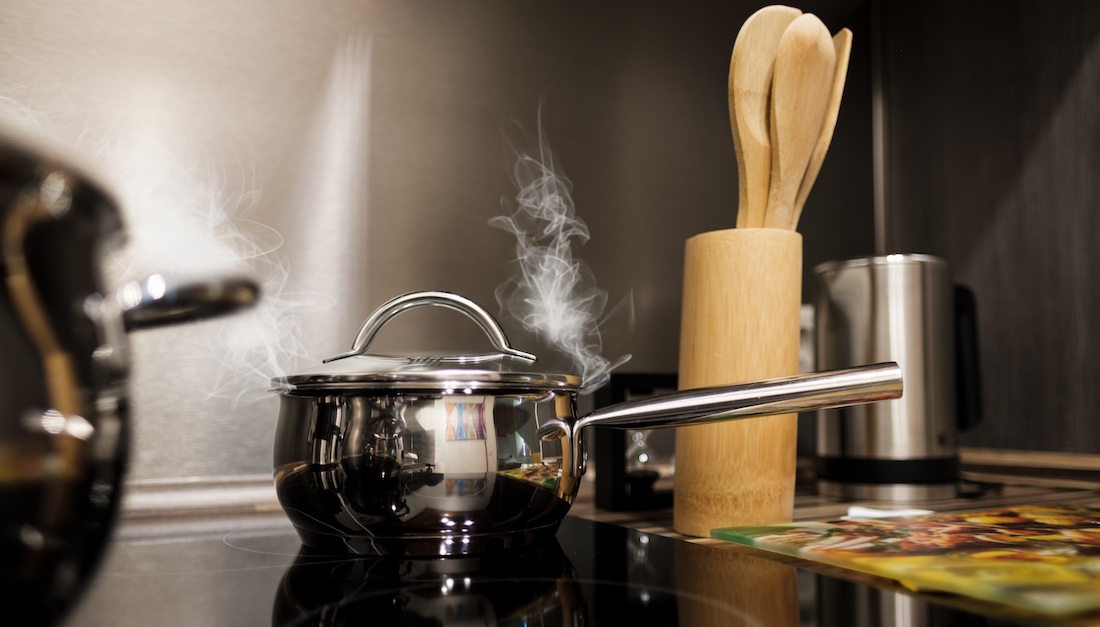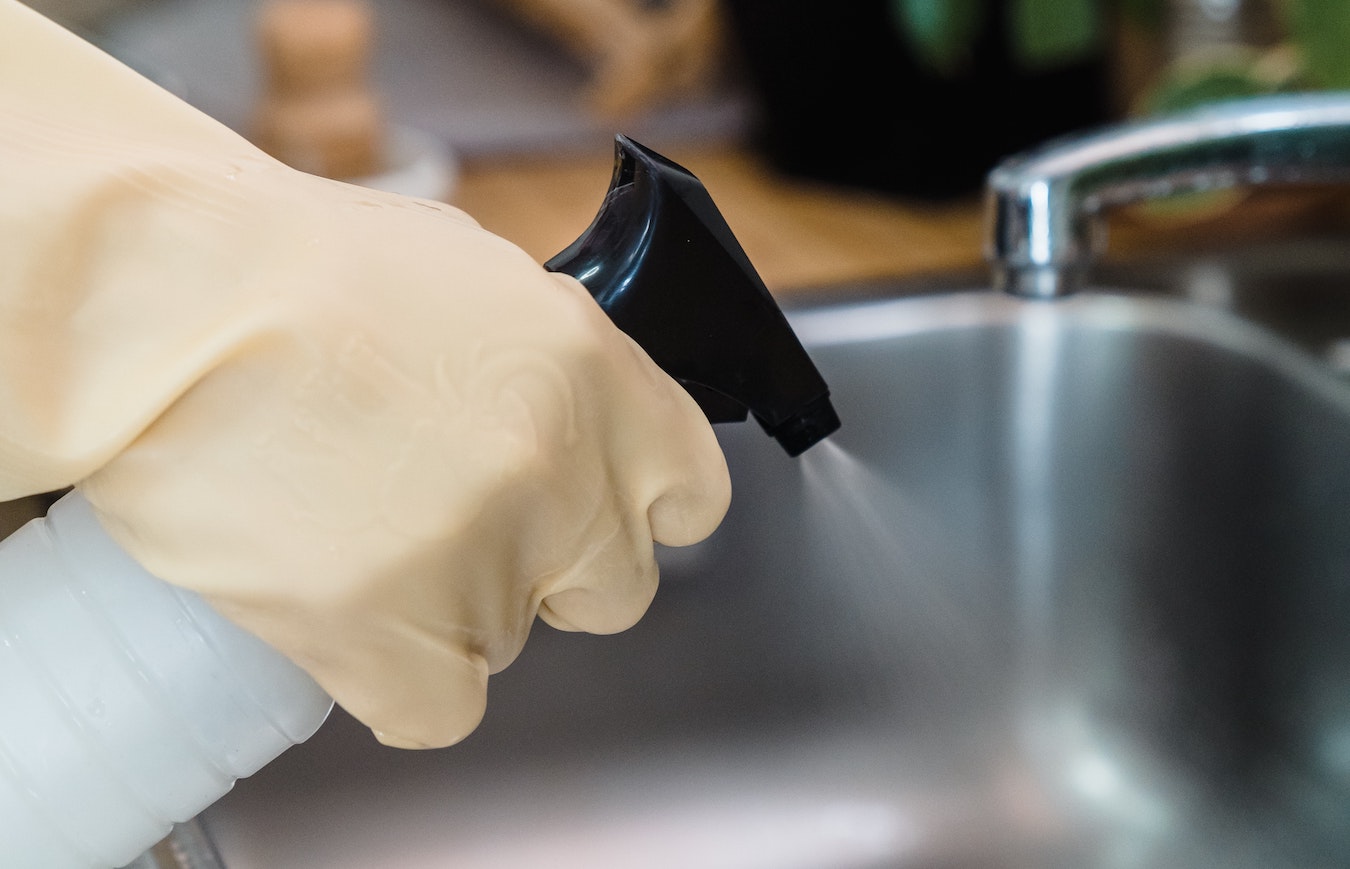How to Clean a Stainless Steel Splashback

Welcome to our comprehensive guide on how to clean a stainless steel splashback.
As a favourite choice in many modern kitchens, stainless steel splashbacks not only provide a sleek, contemporary look but are also known for their robust and resistant nature.
However, like any frequently used kitchen feature, they can attract grime, fingerprints, and cooking splatters over time.
Proper cleaning and maintenance are therefore essential to keep your splashback looking its best and shining bright.
This article will guide you through the most effective methods and tips to keep your stainless steel splashback spotless and sparkling.
Whether you're dealing with stubborn grease or simple daily cleaning, we've got you covered.
Click here to see our range of aluminium Alusplash splashbacks.
How to Clean a Stainless Steel Splashback
Cleaning a stainless steel splashback can seem like a daunting task, but with the right materials and techniques, it can be simple and efficient.
Here's a step-by-step guide:
- Gather Your Materials: To clean your stainless steel splashback, you'll need warm water, a soft cloth or sponge, a mild detergent, white vinegar, and a microfiber cloth for polishing. If you have stubborn stains or burnt-on residue, you might also need baking soda.
- Wipe with Warm Water: Begin by wiping down the splashback with warm water and a soft cloth or sponge. This will remove any loose debris and surface dirt.
- Apply Mild Detergent: Next, use a mild detergent mixed with warm water to gently clean the surface. Remember, stainless steel can be scratched easily, so avoid using harsh chemicals or abrasive scrubbers.
- Rinse and Dry: Rinse the area with warm water, making sure to remove all soap residue, and dry the surface thoroughly to avoid water spots.
- Remove Stubborn Stains: If you have stubborn stains, make a paste of baking soda and water, and apply it to the stain. Let it sit for about 20 minutes, then wipe it off gently with a soft cloth or sponge.
- Vinegar for Shine: For a polished finish, spray some white vinegar onto the splashback and wipe it off with a clean microfiber cloth. The vinegar will leave your stainless steel splashback gleaming and streak-free.
- Regular Maintenance: To keep your stainless steel splashback looking its best, clean it regularly and address spills and splatters promptly. Regular cleaning can prevent build-up and make your cleaning tasks easier.
Remember, always wipe or scrub in the direction of the steel grain for the best results.
Also, always test any new cleaning solutions or methods on an inconspicuous area first to make sure it doesn't cause any discoloration or damage.
Related Post: Do You Need A Splashback Behind A Cooker

What Products Are Good for Cleaning Stainless Steel Splashback?
Stainless steel splashbacks can be easily maintained with gentle cleaning products that are likely already available in your home.
Here are some of the best options:
- Mild Dish Soap: A mild dish soap diluted in warm water is a safe and effective cleaning solution for stainless steel. Simply apply it with a soft cloth or sponge and wipe clean.
- Baking Soda: For stubborn stains, a paste of baking soda and water can be gently rubbed onto the surface. Baking soda is a mild abrasive that can help remove stuck-on food or grease without scratching the steel. Be sure to thoroughly rinse and dry the area after cleaning.
- Vinegar: White vinegar can be used to give your stainless steel splashback a beautiful shine. Spray some vinegar onto the surface and then wipe it off with a clean, soft cloth. It also works great for removing hard water spots.
- Glass Cleaner: Glass cleaner can be effective for tackling fingerprints and smudges on stainless steel surfaces.
- Commercial Stainless Steel Cleaners: There are also specialized cleaners available on the market designed specifically for stainless steel. These can be very effective, especially for handling tough stains or for a deep clean.
No matter which product you choose, remember to always wipe in the direction of the grain of the steel for the best results.
After cleaning, dry the splashback thoroughly to prevent water spots from forming.
Related Post: How To Remove A Stainless Steel SplashbackWhat Products Should You Not Use to clean a Stainless Steel Splashback?
While stainless steel splashbacks are durable and resistant to a lot of everyday wear and tear, certain products can damage their surface and should be avoided:
- Abrasive Cleaners: Products that contain grit can scratch the surface of the stainless steel, damaging its finish. Avoid using abrasive cleaners like scouring powders or creams.
- Harsh Chemicals: Avoid cleaners with chlorine or bleach, as they can react with the steel and cause discoloration or even corrosion.
- Steel Wool or Steel Brushes: These can leave scratches on the surface and make the stainless steel more susceptible to rusting.
- Acidic or Alkaline Cleaners: These can also react with the stainless steel and cause surface damage or discoloration.
- Dirty or Contaminated Cleaning Tools: Make sure your cleaning cloths or sponges are clean and free from leftover cleaning products or grit, as these can also scratch the surface.
Instead, opt for mild detergents, baking soda for stubborn stains, and vinegar for shine.
Always use a soft cloth or sponge for cleaning and a microfiber cloth for polishing.
As a rule of thumb, always test any new cleaning products on an inconspicuous area first to ensure they won't damage your splashback.
Why is Stainless Steel Used For Kitchen Splashbacks?
Stainless steel is a popular choice for kitchen splashbacks for several compelling reasons:
- Durability: Stainless steel is highly durable and resistant to heat, making it an ideal material for a kitchen environment, particularly behind a hob or stove where temperatures can get high.
- Easy Maintenance: It's easy to clean, and unlike tiles, there are no grout lines where mould or dirt can accumulate. Stainless steel surfaces can be quickly wiped down to remove any splashes or spills, making it a practical choice for busy kitchens.
- Hygienic: Stainless steel is a non-porous material, meaning it doesn't absorb or harbour bacteria, contributing to a more hygienic kitchen environment. This is one of the reasons why it's the material of choice in professional kitchens.
- Aesthetics: The sleek, reflective surface of stainless steel gives a modern, industrial edge to kitchen decor. It can seamlessly integrate with various kitchen appliances, creating a cohesive and stylish look.
- Versatility: Stainless steel complements a variety of kitchen styles, from modern minimalist to more rustic or industrial designs.
- Reflective Qualities: The reflective surface of stainless steel splashbacks can also help to bounce light around the room, making the kitchen appear brighter and more spacious.
For these reasons, stainless steel is often a top choice for kitchen splashbacks, offering a blend of functionality, durability, and design appeal.
Whats the Best Way to Make Stainless Steel Shine?
Making stainless steel shine and keeping it looking its best requires regular cleaning and some easy maintenance.
Here's the best way to bring out that mirror-like finish:
- Clean Regularly: Regular cleaning is key. Use warm water, a gentle dish soap, and a microfiber cloth to wipe down the surface. Always rub in the direction of the stainless steel grain to avoid scratching.
- Dry Thoroughly: After cleaning, dry the surface thoroughly. Any standing water can lead to water spots and streaks. Use a dry microfiber cloth to prevent lint residue.
- Vinegar for Tough Spots: If you have tough spots or dried-on substances, using white vinegar can be helpful. Apply a small amount of vinegar to a microfiber cloth and rub gently. Rinally rinse the area with warm water and dry.
- Polish with Olive Oil or Specialized Cleaner: For that extra shine, you can polish your stainless steel with a few drops of olive oil or a specialized stainless steel cleaner. Apply a small amount to a soft cloth and rub in the direction of the grain. This will add a lovely shine and create a protective layer.
Remember, stainless steel can scratch easily, so always avoid using abrasive cleaners or scrubbing pads.
Keep your cleaning cloths soft and your movements gentle for the best results.
Some Notes From an Expert Kitchen Fitter
I have installed hundreds of stainless-steel splashbacks over the years.
Stainless steel can in my opinion look great in a modern kitchen but to do so it needs to be clean a shiny.
In my experience the best way to keep your splashback looking great is regular cleaning.
Instead of wating for it to get really grubby before giving it a deep clean, give it a quick wipe over every day or so will be just as easy and look much better.
Final Notes On Cleaning Stainles Steel Kitchen Splashbacks
Kitchen splashbacks, particularly stainless steel ones, are not only functional but also add aesthetic appeal to your kitchen.
Regular cleaning can keep your splashback looking its best and reduce build-up.
There are also specialised stainless steel cleaners for a deeper clean.
Avoid using abrasive cleaners, harsh chemicals, and steel wool, as they can damage the stainless steel surface.
Stainless steel is often chosen for kitchen splashbacks due to its durability, easy maintenance, hygienic properties, and modern appeal.
Lastly, regular cleaning and polishing with a few drops of olive oil or a specialised cleaner can maintain the shiny appearance of stainless steel.


